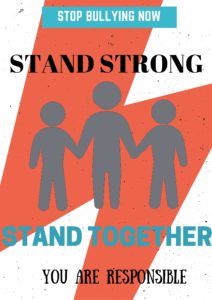Empathy and Friendship
Posted by Lea Kozulic, Emily Tyler, and Susan Smith at Friday, May 22, 2015 4:59:32 PM CDT
#1
The course materials shed light on bullying by showing the connection between bullying and reinforcing gender stereotypes. Bullying, especially in males, came as a way of reinforcing a certain idea of masculinity in the degradation of homosexuality and an exaggerated sense of heterosexuality with a male gaze. They acted to limit people to a certain idea of gender roles, a limitation that the 2nd Wave Feminism Free to Be Me series attempted to break down and create greater diversity through. The series worked to acknowledge differences within gender and make them more acceptable so that bullying would not be such an issue in aligning with only certain ideas of gender roles.
#2
Free to be content challenged gender roles, race and class. It focused on overcoming the large gender divide that was represented in children’s literature. The good thing was that those songs from the album were catchy and easy to learn so teachers could use them in school as well to create a sense of new ideology for kids starting from their early age. That way they would create a common way of thinking for children, a common sense of ideas which would help with empathy. Empathy would be much greater and kids would understand each other better which would reduce bullying and also, raise awareness about it to other teachers and parents. It’s really hard for parents to force their children to just stop being who they are, just like’ve seen it in the movie Bully. You need to gradually teach them how to behave and that’s why Free to be was great for nurturing. It was great how granny, the member of older generation, was the person who helped in breaking the barriers in the movie. That shows how wide audience the content of Free to Be had. The era of second wave feminism was the era of new ideas and liberty where noone was supposed to be afraid of what they truly are and not be afraid to show it. Free to Be served as a friendly and accessible point of entry for the feminist message of gender equality and self-atualization. Many feminists argued that children’s gender indentities were shaped primarily by their social environment so they wanted everyone to embrace the differences between people and encourage them to not be afraid to show if they are different than someone else.
#3
Because gender expectations are so stringent I think it could be hard to make friends. Pascoe showed that it is not only aggressive bullying that attacks gender roles but friends joking with friends too, as we see in 40 Year Old Virgin, “you know how I know you’re gay…” Friends would have to be constantly guarding themselves from displaying any kind of feminine behavior to avoid this. Putting on an act at all times of who they are socially expected to be, not necessarily who they want to be. This robs people the opportunity to be true to themselves but also build meaningful friendships. Being in a constant act also can lead to an actual belief of this is who I am, we saw this problem in 5/20’s readings. It is important for kids to be able to find other kids they can identify and empathize with. A moving scene in the film Bully was when one of the young boys who is friends with 12 year old suicide-victim Ty discussed his journey from second to fourth grade wherein he talked about how he went from being a bully to understanding the effects of his actions and changing them. By Ty taking the opportunity to empathize for other kids he ceased bullying himself and was able to make friends.
#4
Pascoe looks at bullying not as a matter of individualistic behavior deviations, but rather results of structural inequalities which therefore need to be dealt with on a large-scale, systematic manner rather through personal corrections. It’s occurring because of the gender socialization. It’s not just gay kids that are bullied because they are gay. It is a part of boy’s gender socialization where they try to shape their masculine behaviors so they would call someone gay just because that boy would cry or express the sensitive behavior. Pacoe showed that middle age boys were the most common bullies, that being a bully was like a “rite of passage” to becoming men. This rite of passage mostly consists of young boys being homophobic. She explains that homophobic is not just the fear of gay men but a catch-all for anything seen as unmasculine. This homophobic taunting she explains plays an important role in boys’ gender socialization process. Because this behavior is done much more than the traditional bullying manner, by friends joking with friends for example’ Pacoe states that she believe bully programs are too short sighted, that rather the focus should be on addressing structural inequalities regarding gender and sexuality. The video showed that children who were seen as others struggled from bullying, if you are defined as being other then society doesn’t have to befriend you or show you empathy. The young girl was forced to quit basketball because they were concerned with touching her. They young boy was forced to switch to a different bus because of the constant verbal and physical abuse he was subjected to. During the town hall meeting a young boy stands up and state that the administration doesn’t do anything because they act like the kind themselves must have done something to deserve the negative attention or that they will.
#5
Empathy is the ability to understand and share the feelings of another. If we as individuals took the time to consider others feelings, then after this consideration prudently decided how we act the world would have the opportunity to achieve social justice. Social justice is the view that everyone deserves equal economic, political, and social rights and opportunities. If we do not take the time to display empathy and consider others feelings, we will not be able to achieve social justice. In the movie Bully, noone felt/experienced empathy with Alex besides his parents who went to see the principal because they didn’t know what else to do and they were devastated and desperate because they knew what their son is going through and they couldn’t help him. Principal on the other hand, didn’t really show signs of empathy with the parents because she said she would help them in fall and she did not. Finally, she intervened and asked her assistant to work on the case but it didn’t end up being very effective because children kept teasing him and the boy ended up being scared even more. Same thing with the girl named Kelly who was a lesbian. In the end of the movie, she said that “maybe there’s other place she could go and make a difference”. But, not here.
#6
A social justice approach to bullying can be done through increased empathy. When people can see what others are experiencing in an emotional way, as the documentary Bully allowed people to do, it becomes harder to ignore the problem. More things of this nature- things that allow people to connect with victims and feel their pain- should be used in creating empathetic understanding and hopefully through that reduce if not eliminate bullying.


Recent Comments